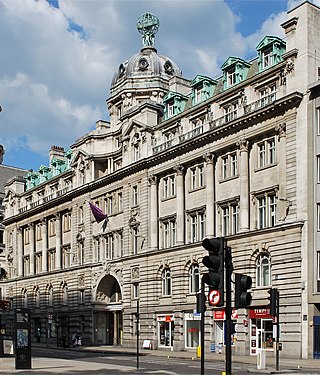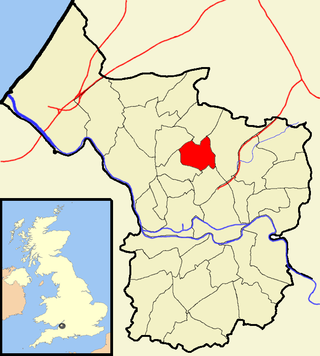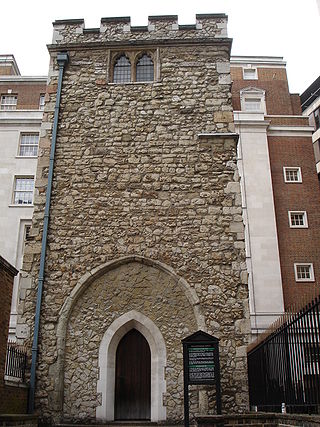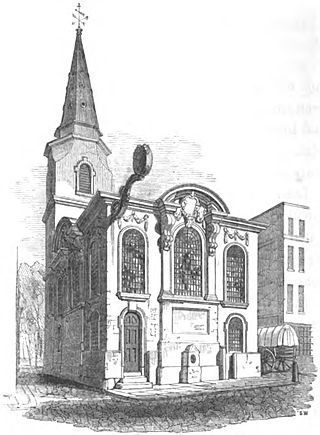
The Barbican Estate, or Barbican, is a residential complex of around 2,000 flats, maisonettes, and houses in central London, England, within the City of London. It is in an area once devastated by World War II bombings and densely populated by financial institutions, 1.4 miles (2.2 km) north east of Charing Cross. Originally built as rental housing for middle and upper-middle-class professionals, it remains an upmarket residential estate. It contains, or is adjacent to, the Barbican Arts Centre, the Museum of London, the Guildhall School of Music and Drama, the Barbican public library, the City of London School for Girls and a YMCA, forming the Barbican Complex.

The Worshipful Company of Coopers is one of the livery companies of the City of London. The organisation of coopers existed in 1422; the Company received its first royal charter of incorporation in 1501. The cooper trade involved the making of wine, beer, and spirit casks ; the Livery Company also functions as a charitable foundation, and supports two education establishments: the Coopers' Company and Coborn School of Upminster, Essex, and Strode's College of Egham, Surrey. The former was founded in the Ratcliffe area of London in 1536 and donated to the Company who have been involved with it ever since.

The Lord Mayor's Show is one of the best-known annual events in London as well as one of the longest-established, dating back to the 13th century. A new lord mayor is appointed every year, and the public parade that takes place as their inauguration ceremony reflects that this was once one of the most prominent offices in England and subsequently the United Kingdom.

Guildhall is a municipal building in the Moorgate area of the City of London, England. It is off Gresham and Basinghall streets, in the wards of Bassishaw and Cheap. The current building dates from the 15th century; however documentary evidence suggests that a guildhall had existed at the site since at least the early 12th century. The building has been used as a town hall for several hundred years, and is still the ceremonial and administrative centre of the City of London and its Corporation. It should not be confused with London's City Hall, the administrative centre for Greater London. The term "Guildhall" refers both to the whole building and to its main room, which is a medieval great hall. It is a Grade I-listed building.
Moorgate was one of the City of London, England's northern gates in its defensive wall, the last to be built. The gate took its name from the Moorfields, an area of marshy land that lay immediately north of the wall.

London Guildhall University was a university in the United Kingdom from 1992 to 2002, established when the City of London Polytechnic was awarded university status. On 1 August 2002, it merged with the University of North London to form London Metropolitan University. The former London Guildhall University premises now form the new university's City campus, situated on various sites in the City of London.

Bishopston is a suburb of the city of Bristol in south west England. Bishopston is around Gloucester Road (A38), the main northern arterial road in the city and Bishop Road.

All Hallows Staining was a Church of England church located at the junction of Mark Lane and Dunster Court in the north-eastern corner of Langbourn ward in the City of London, England, close to Fenchurch Street railway station. All that remains of the church is the tower, built around AD 1320 as part of the second church on the site. Use of the grounds around the church is the subject of the Allhallows Staining Church Act 2010.

Bassishaw is a ward in the City of London. Small, it is bounded by wards: Coleman Street, east; Cheap, south; Cripplegate, north; Aldersgate, west.

St Michael Bassishaw, or Basinshaw, was a parish church in Basinghall Street in the City of London, standing on land now occupied by the Barbican Centre complex. Recorded since the 12th century, the church was destroyed in the Great Fire of 1666, then rebuilt by the office of Sir Christopher Wren. The rebuilt church was demolished in 1900.

St Swithin, London Stone, was an Anglican Church in the City of London. It stood on the north side of Cannon Street, between Salters' Hall Court and St Swithin's Lane, which runs north from Cannon Street to King William Street and takes its name from the church. Of medieval origin, it was destroyed by the Great Fire of London, and rebuilt to the designs of Sir Christopher Wren. It was badly damaged by bombing during the Second World War, and the remains were demolished in 1962.

Cheap is a small ward in the City of London, England. It stretches west to east from King Edward Street, the border with Farringdon Within ward, to Old Jewry, which adjoins Walbrook; and north to south from Gresham Street, the border with Aldersgate and Bassishaw wards, to Cheapside, the boundary with Cordwainer and Bread Street wards. The name Cheap derives from the Old English word "chep" for "market".

St Katherine Coleman was a parish church in the City of London, situated in St Katherine's Row, on the south side of Fenchurch Street, in Aldgate Ward. Of medieval origin, it narrowly escaped destruction in the Great Fire of London in 1666, but was rebuilt in the eighteenth century. The church closed in November 1926 and was demolished soon afterwards.

Coleman Street is one of the 25 ancient wards of the City of London, England, and lies on the City's northern boundary with the London Borough of Islington.

St Alphege or St Alphage London Wall was a church in Bassishaw Ward in the City of London, built directly upon London Wall. It was also known as St Alphege Cripplegate, from its proximity to Cripplegate. It is now operated as St Alphage Garden.

Old Jewry is a one-way street in the City of London, the historic and financial centre of London. It is located within Coleman Street ward and links Poultry to Gresham Street.

St Michael's Wood Street was a church and parish of medieval origin in Cripplegate Ward in the City of London, and is first mentioned in 1225 as St. Michael de Wudestrate. It stood on the west side of Wood Street, initially with a frontage on Huggin Lane but later on Wood Street itself.

Wood Street is a street in the City of London, the historic centre and primary financial district of London. It originates in the south at a junction with Cheapside; heading north it crosses Gresham Street and London Wall. The northernmost end runs alongside The Postern, part of the Barbican estate, stopping at Andrewes House. Today Wood Street lies within the wards of Bassishaw and Cheap.

The City of London is divided into 25 wards. The city is the historic core of the much wider metropolis of Greater London, with an ancient and sui generis form of local government, which avoided the many local government reforms elsewhere in the country in the 19th and 20th centuries. Unlike other modern English local authorities, the City of London Corporation has two council bodies: the now largely ceremonial Court of Aldermen, and the Court of Common Council.

The Bull and Mouth Inn was a coaching inn in the City of London that dated from before the Great Fire of London in 1666. It was located between Bull and Mouth Street in the north and Angel Street in the south. It was once an important arrival and departure point for coaches from all over Britain, but particularly for the north of England and Scotland. It became the Queen's Hotel in 1830 but was demolished in 1887 or 1888 when new post office buildings were built in St Martin's Le Grand.




















